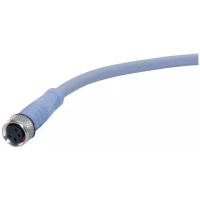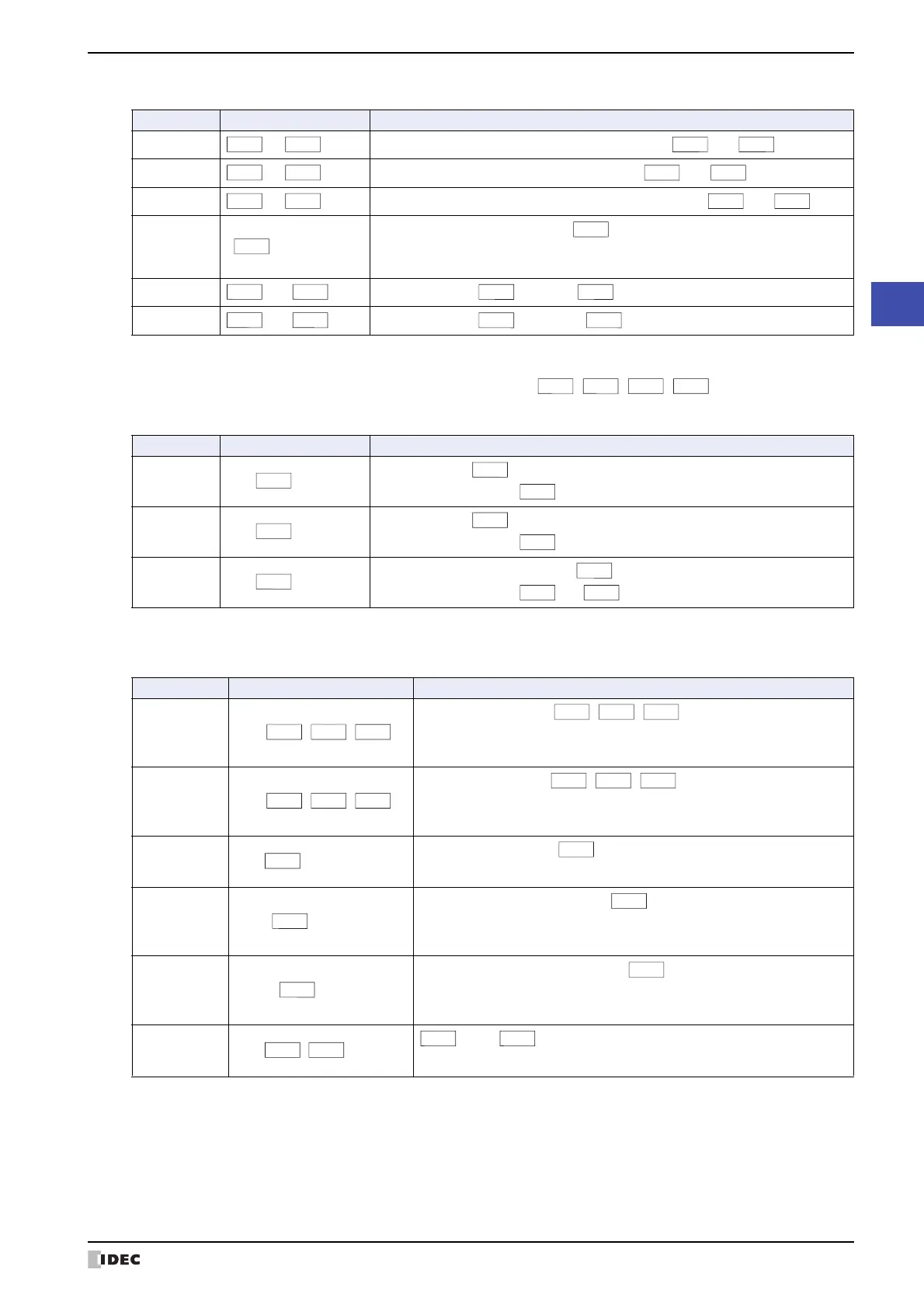WindO/I-NV4 User’s Manual 20-23
4 Script Definition Method
20
Script
■ Bit operator
●
Function
Device address, constant, and temporary device are described as , , , ... here.
■ Bit function
■ Word function
Arithmetic operation
(Continued to next page)
Operator Format Description
& &
Calculates the logical product (AND) of each bit of and .
| |
Calculates the logical sum (OR) of each bit of and .
^ ^
Calculates the exclusive logical sum (XOR) of each bit of and .
~~
Reverses the logic of each bits of .
For word device and fixed values, 0 will be 65535, and 65535 will be 0.
For bit device, 0 will be 1, and 1 will be 0.
<< <<
Shifts each bit of to left for bit(s).
>> >>
Shifts each bit of to right for bit(s).
Function Format Description
Bit set
SET( );
Turns bit device to 1.
It will be same result as = 1
;
.
Bit reset
RST( );
Turns bit device to 0.
It will be same result as = 0
;
.
Bit reverse
REV( );
Reverses the 1 and 0 of
bit device
.
It will be same result as = ~
;
.
Function Format Description
Maximum
value
MAX( , , )
Maximum value out of , , is returned.
• This can be used for all data types.
• Up to 15 arguments can be defined.
Minimum
value
MIN( , , )
Minimum value out of , , is returned.
• This can be used for all data types.
• Up to 15 arguments can be defined.
Exponential
function
EXP( )
Exponential function of is returned.
• This can only be used for data type Float32(F).
Natural
logarithm
(Base: e)
LOGE( )
Natural logarithm (base is e) for is returned.
• This can only be used for data type Float32(F).
• Set a value larger than 0 for argument.
Common
logarithm
(Base: 10)
LOG10( )
Common logarithm (base is 10) for is returned.
• This can only be used for data type Float32(F).
• Set a value larger than 0 for argument.
Exponentiation
POW( , )
to the power is returned.
• This can only be used for data type Float32(F).

